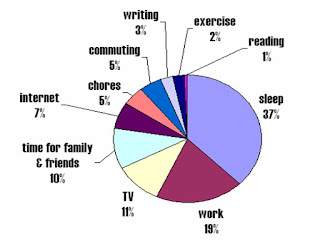First, do no harm... ?
Non-maleficence probably makes sense in healthcare, where there is perhaps a human tendency to over-intervene, and in an arena where severe outcomes to life and limb (and unintended consequences) can't always be predicted with certainty.
But more broadly in life, what do we do when faced with difficult decisions? Does the maxim of “first, do no harm” work?
Non-maleficence might
suggest, do nothing. Utilitarianism might suggest that we have a moral
obligation to throw the switch. 1 death is better than 5.
But interestingly, in 2017, YouTube educator Michael
Stevens conducted an experiment in which people were made to believe they were
in charge of a rail switch, where there was a real decision to be made to
either save 5 people at the cost of 1 person, or leave things alone.
It turns out that in
this “real” situation, the majority of people chose not to
pull the switch. So, whatever people might say in a survey, it seems the
pitiless heart of utilitarianism might be too cold-blooded for most people to
handle in real life!
Does the algorithm prioritise the safety of the passenger or surrounding traffic? Vehicular traffic or pedestrians? Run into five people or
swerve to hit one? An old couple crossing the street or a young mother with a
baby stroller? Some human being is going to have to decide and code this!
To make things even more complex -
most of real life isn’t quite as binary as the trolley problem. When we
encounter a problem, it isn’t often the case that action or inaction will
clearly make things better/worse. All we have is a sense of the possibility of
things becoming better/worse.
He has a few options. Apply for the role anyway, and possibly risk antagonizing
his current supervisor. Or, spend time, effort and money to obtain the
necessary qualifications, and apply for the role later. Or, stay in his current
role, though it doesn’t match his career plans.
If he chooses to adhere to the maxim
of “first, do no harm”, then he just stays put.
But if he chooses to act, there is a
cost. Possible harm.
While there is no absolute
assurance, the hope is that the dip will pay off in the longer run. But if they
don’t evolve, then at some point, the company (or church, or small group) will glide to a halt. Which do we
choose in theory, and which do we do in practice?
Before I got married, my then
girlfriend and I signed up for a Marriage Preparation Course. After every
session, we would smile at each other and at the pre-marital counsellor, hold
hands and leave… and then have the most riotous quarrels!
Why? Because we didn’t realise there
were so many things we disagreed about. How to manage money. How to relate to
parents and parents-in-law. Views about children. Views about career. Where to
live? Who’s responsible for household chores? And which chores? Practically
every issue seemed like a break-up issue.
All these painful quarrels enabled us to bring issues to the surface and resolve them. Even if the quarrels had caused a break-up, that would have been a good result. “First, do no harm” would not have been a good idea.
I suspect, again, that the vast
majority of readers will agree with this in theory. Yet, in real life, so many
choose not to go through rigorous marriage preparation, in order to avoid the
immediate pain/harm.
Most of us will agree that a true friend would call it out. But in reality, most of us don’t. We’d rather avoid the immediate “harm”.
For Christians, the issue is often one of evangelism. Do we
share our faith with our friends and family? It could hurt the relationship.
But if we don’t… are we really friends and family?
If we change things up, and switch gears down, we risk falling
to 50 km/h and failing even more miserably. But given time (and if we act soon enough) there’s a chance that
the increased acceleration will bring us above 70 km/h.
What do we choose? If the only way to get from 0 to 1 is first to get to -2, will we bite the bullet?
First, do no harm and stay at zero? Or Move Our Cheese?














Comments